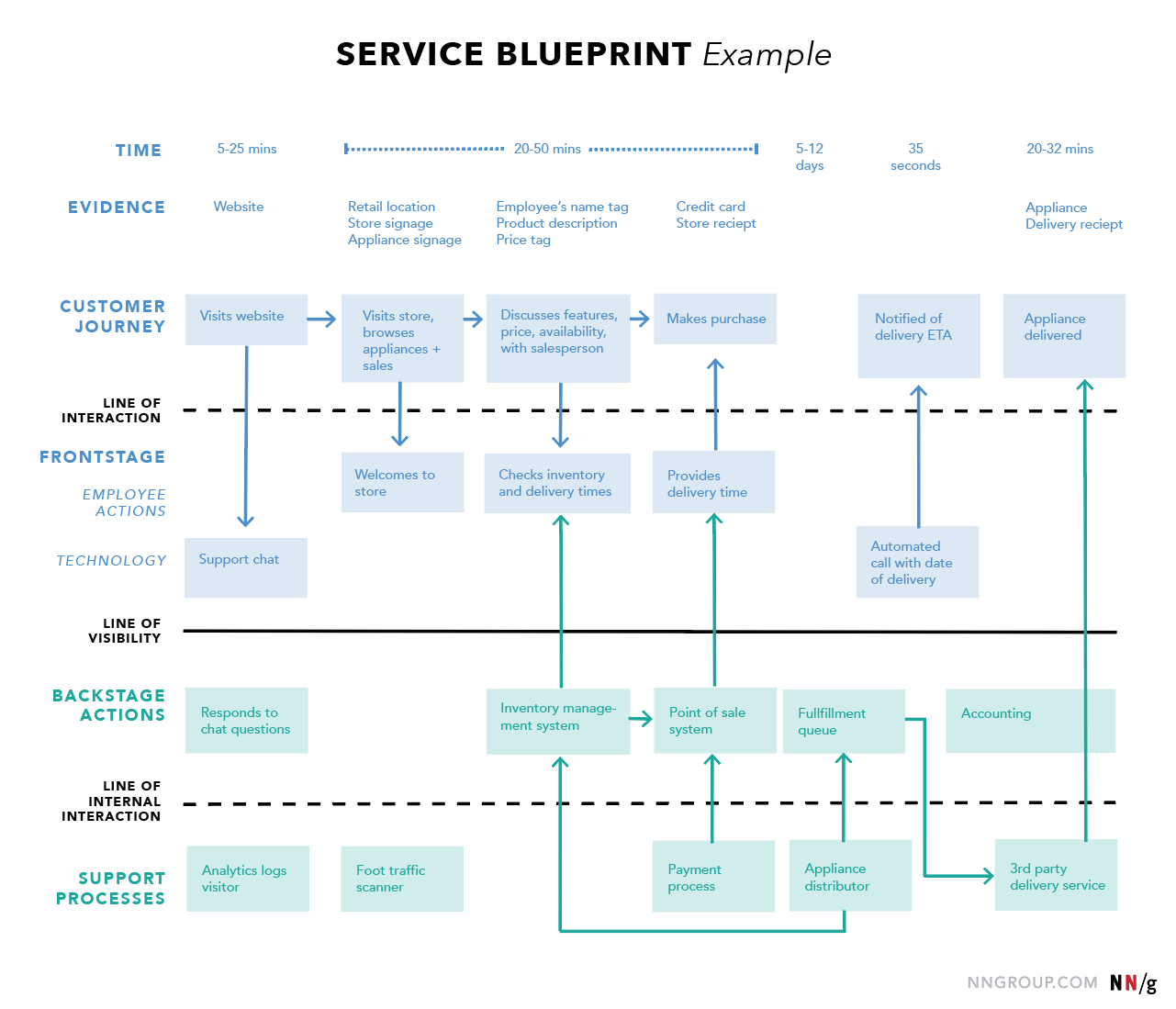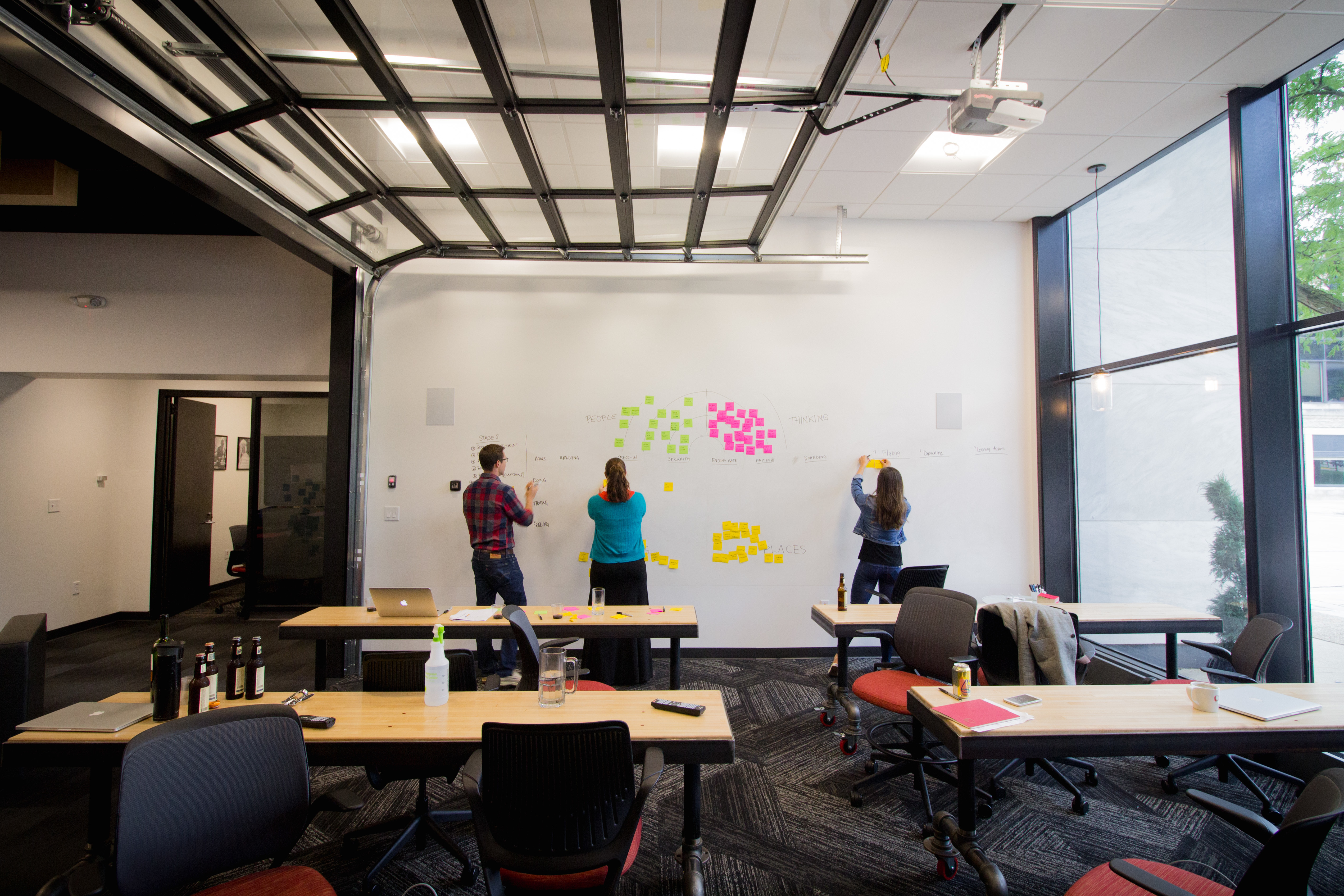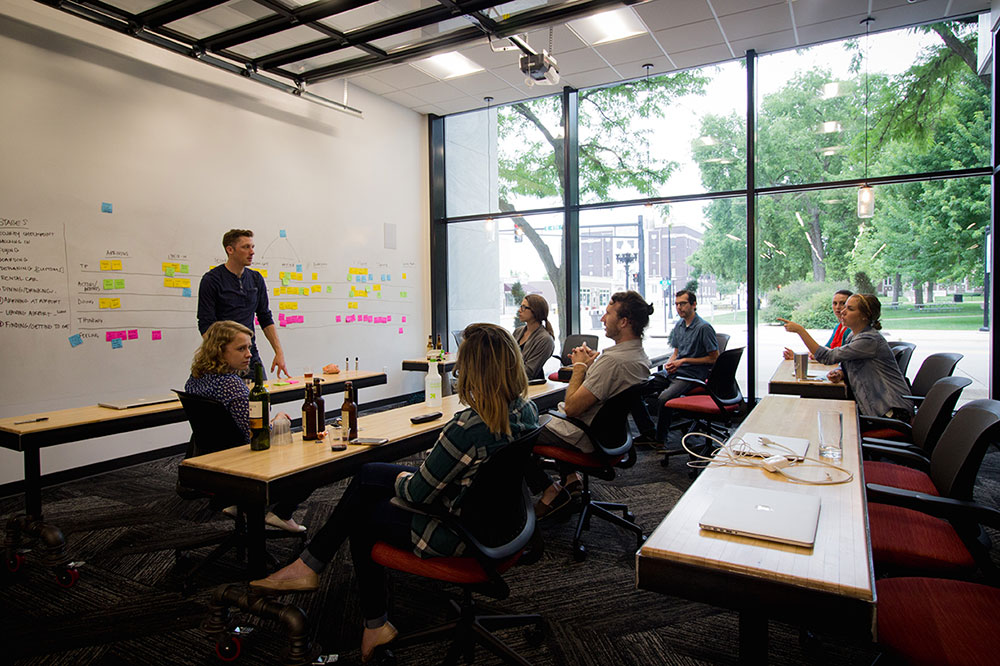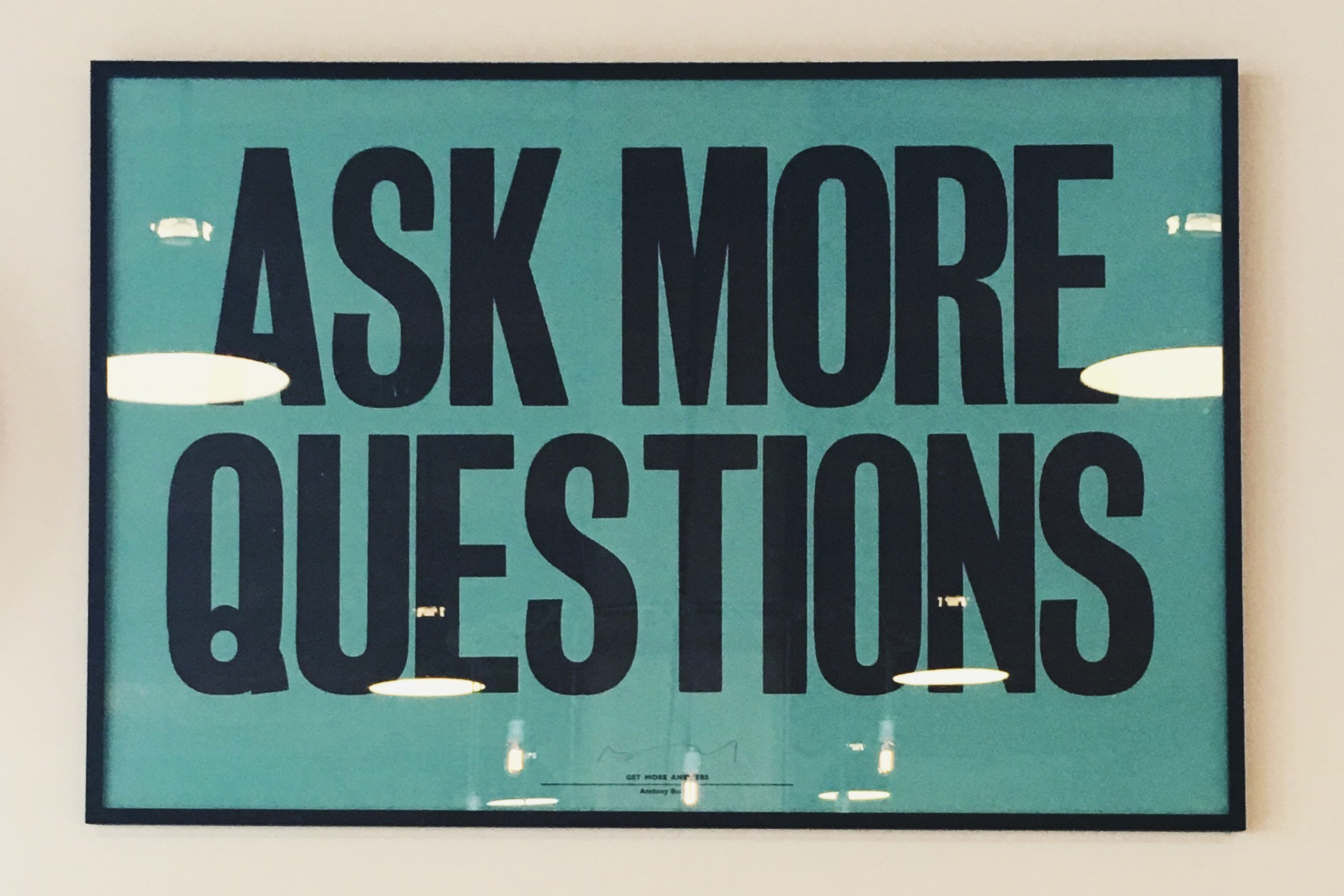The Best Customer Experiences Have These 3 Qualities
12 min read
You’ve been waiting for the release of the new Star Wars movie FOREVER. It’s the kind of movie that’s meant to be seen in a theater because a TV screen just won’t do it justice; so you bought your ticket in advance and have had opening day marked on the calendar since you saw the first preview.
There’s something exciting about the experience—indulging in a large bucket of buttery popcorn and seeing the newest movie on a huge screen with sound coming at you from every direction.
But what happens when that experience turns into a list of complaints? Your popcorn cost more than your dinner, it was served by a teenager who didn’t even make eye contact with you, you’ve already eaten the whole bucket by the time 22 minutes of previews are over (and now your stomach hurts), the volume of the film is too low to drown out the rest of the audience’s crunching, you wish you had brought your winter coat, and the green “EXIT” sign is annoyingly reflecting across the lower-right part of the screen. When this happens, you leave the theater upset that you dropped $30 for a movie you couldn’t even enjoy. Why didn’t you just stay home and choose a new Netflix show to watch instead?
An experience like the one mentioned above may leave your customer thinking twice before buying your product again.
The misconception of the customer experience.
Most companies have a misperception about the experience they are actually delivering to their customers. In a study of 362 businesses, 80% of them believed they were delivering a “superior experience” to their customers, while only 8% of their customers said they “were really delivering.” This creates a huge window of opportunity for businesses to actually deliver an exceptional customer experience. So why is there such a large discrepancy between perception and reality?
You consider ‘customer service’ to be ‘customer experience’.
The way you interact with your customers is important, but the customer experience starts the minute someone becomes aware of your brand. So, don’t call your customer service representatives ‘customer experience specialists’—you’re just doing yourself an injustice. You need people who are actually thinking about the entire experience, from the moment a customer hears your company name to the post-purchase thank you and tracking details. Your brand should look, feel, sound and smell like it just makes sense.
There are gaps in your service.
When you don’t understand the entire landscape, it’s hard to see opportunities for improvement. We use service blueprints to map out everything that affects a customer’s journey.

Your company is product-centered, rather than customer-centered.
When you have a product you believe in, it’s easy to get lost in the details of your product from a business standpoint and forget to step back and see the product from your customers’ perspectives.
American Express found that over two thirds of American consumers are willing to spend 14% more with a company that is delivering an exceptional customer experience. That means your business could have the competitive edge, even at a higher price point. You’re also more likely to hold onto the customers you’re attracting. People will be more loyal to your brand when you care personally about their interaction with your product.
What makes a great customer experience?
1. The best customer experiences are well-rounded.
Your movie theater may have the greatest popcorn in town, but if a movie-goer didn’t feel welcomed when they bought their ticket, or if they couldn’t hear the movie, the taste of the popcorn probably didn’t matter—the movie-goers experience was spoiled by other factors.
Many companies put a strong focus on providing great customer service after the purchase. This is an extremely valuable part of the customer’s experience, but it’s a reactive approach and it’s a scenario every customer may not experience. It neglects being proactive about making sure your customers have a great experience with your brand from the moment they encounter it. And, when a customer is displeased with their experience, a more likely scenario is that they simply won’t return to your business. Customer service is just a piece of a larger system of moving parts that make up the complete customer experience.
So where should your customer experience begin?
It doesn’t begin when a customer has a question about using your product or when they need a problem solved. A customer’s experience with your brand begins at the point when they become aware you exist. How did they hear about you—an advertisement, a referral from another customer? If your brand is relevant and appealing to them, the experience probably continues into them learning more about your product or service and hopefully into the purchase and use of your product—the user experience (UX). A customer’s experience may even extend past that into the way your product or service affects their day-to-day life.
A customer’s experience with your brand begins at the point when they become aware you exist.
Ritz Carlton leads the way in providing a holistic customer experience—from the way employees are trained to talk to their customers to the way they empower their employees to go out of their way to make each guest’s stay a unique experience. They do not just provide rooms for people to stay in. They accommodate guests special dietary needs through their whole vacation. They congratulate guests on their retirement with a thoughtful gift and card signed by the entire staff. They are aware of what customers need before, during, and after their stay with them.
An entire customer experience contains many moving parts and will look different for every business or organization. Do you run an online store? The user experience of your website may play a large role in the experience a customer has with your brand. Do you own a coffee shop? No matter how great your coffee is, the layout of your shop, traffic flow, and atmosphere will play a large role in the customer experience. It’s important to analyze every touchpoint a customer has with your brand.
 This customer journey mapping exercise helps our team analyze all touchpoints a customer might have with a product or brand.
This customer journey mapping exercise helps our team analyze all touchpoints a customer might have with a product or brand.
2. The best customer experiences are differentiators.
What makes your business stand out from others? The way that a customer interacts with your brand can set you apart from other companies in your industry. You may be selling a great product, but if the experience of finding, buying, and even unpackaging it isn’t unique or better than your competitors, your customers will go elsewhere. There’s a reason Ritz Carlton is set apart from Hilton or Marriott.
Disney World knows that their customers might have trouble finding their cars at the end of their day in the park. Everyone is exhausted, sunburnt, and ready to go home—and nobody has the energy to search for their car carrying two crying children. They saw this gap in their service and now their tram drivers can direct guests to their cars based on the time they took the tram into the park that morning. How much more likely are parents to take their children to Disney’s parks knowing that the end of their day won’t be quite so painful? A lot, I’m guessing.
Warby Parker, a major online glasses retailer, knows the customers they are targeting do most of their shopping online. But often, online shopping means losing the ability to try something on, meaning customers either take a gamble or purchase several items with the intention of returning them later. They have designed a customer experience that satisfies both of these customer needs. Shoppers begin their experience online, choosing 5 pairs of glasses they like. Trials of these pairs are then shipped to their doorstep for them to try out for 5 days. This gives shoppers the opportunity to see what their friends and family think. They even have a handy app that lets customers take selfies to remember which pair they liked best. This is a different model than any other online store. To top it off, the experience ends with making their customers a part of social good by donating a pair of glasses each time one is purchased. The entire Warby Parker experience leaves customers feeling happy and fulfilled with the knowledge that they got a quality pair of glasses and their purchase helped someone else in need.
Disney World doesn’t just care about getting customers on their rides, they also care about getting them home. Warby Parker isn’t just selling glasses, they are making shopping online for glasses effortless, fun, and part of a bigger cause. These experiences are unique to these successful brands—they are experiences that set them apart from others in their industries.
Where can you look for opportunities to make your experience unique? A great customer experience should be dissected part-by-part to discover where your weaknesses and strengths might be. This process will also help you find opportunities to improve your customer experience and set yourself apart from other businesses.
3. The best customer experiences focus on relationships.
In our personal relationships we value trust, honesty, empathy, and humility. We expect people to mess up sometimes, but we are generally forgiving if they are sincerely apologetic and correct their mistake. The same is true in a customer’s relationship with your brand. Customers are looking for a brand they can trust, that is humble, and that cares about them in return. It’s likely you won’t be perfect, but if you own and over-correct for your mistakes, your customers will be generally forgiving, and they may even respect you more.
Think about your organization’s mission—and I don’t mean the stuffy mission statement that nobody remembers, but the true purpose behind what you are doing. If your business has a mission for sales, numbers, dollars, and productivity, your customer experience will reflect that. If your business is on mission for the people you are serving, your customers will have a much more personal connection to you and your product or service—a relationship.
When you think about what business you’re in, don’t define it by the product you’re selling or service you’re offering. Define your business by the problem you’re solving for people. It’s not just about the end product, it’s about the whole experience. For example, if you own a coffee shop are you in the coffee business or are you in the business of providing a space for people to meet, relax, and be inspired?
By focusing your business on your customers rather than your product, not only will you better serve people and their needs, but your loyalty to them will likely be reciprocated.
Chick-fil-A says they “don’t serve chicken, [they] serve people.” And they are one of the best examples of putting the customer at the center of everything they do, from offering to refill your drink for you to providing fresh flowers on your table. Southwest Airlines has a story of caring about one mother enough to stop a plane before takeoff and alert her that her son was in a coma. They rebooked her flight so she could see him, packed a lunch for when she arrived, and called to check in on them a few days later. All of this extended well past the sale of her plane ticket, but you can almost guarantee she will trust Southwest Airlines to get her where she needs to go again in the future.
A great customer experience knows its customers—and it knows them well. It cares to know what makes them happy, what’s upsetting them, and what they’re expecting from your brand. A deep understanding of and empathy for your customers comes through listening to and acting upon their feedback. Walking with your customers every step of the way is the best way to ensure they are satisfied at every point of contact they have with your brand.
Don’t be the company that leaves your customers disappointed with their movie going experience. Be the company that has your customers leaving the movie theater gushing about the action packed film they just watched. Who are Rey’s parents? Is she related to Obi Wan? Does Princess Leia die? Does Luke die? The questions are endless. I hope you’ll leave the new Star Wars film able to focus on the answers to these endless questions, rather than a negative customer experience.





